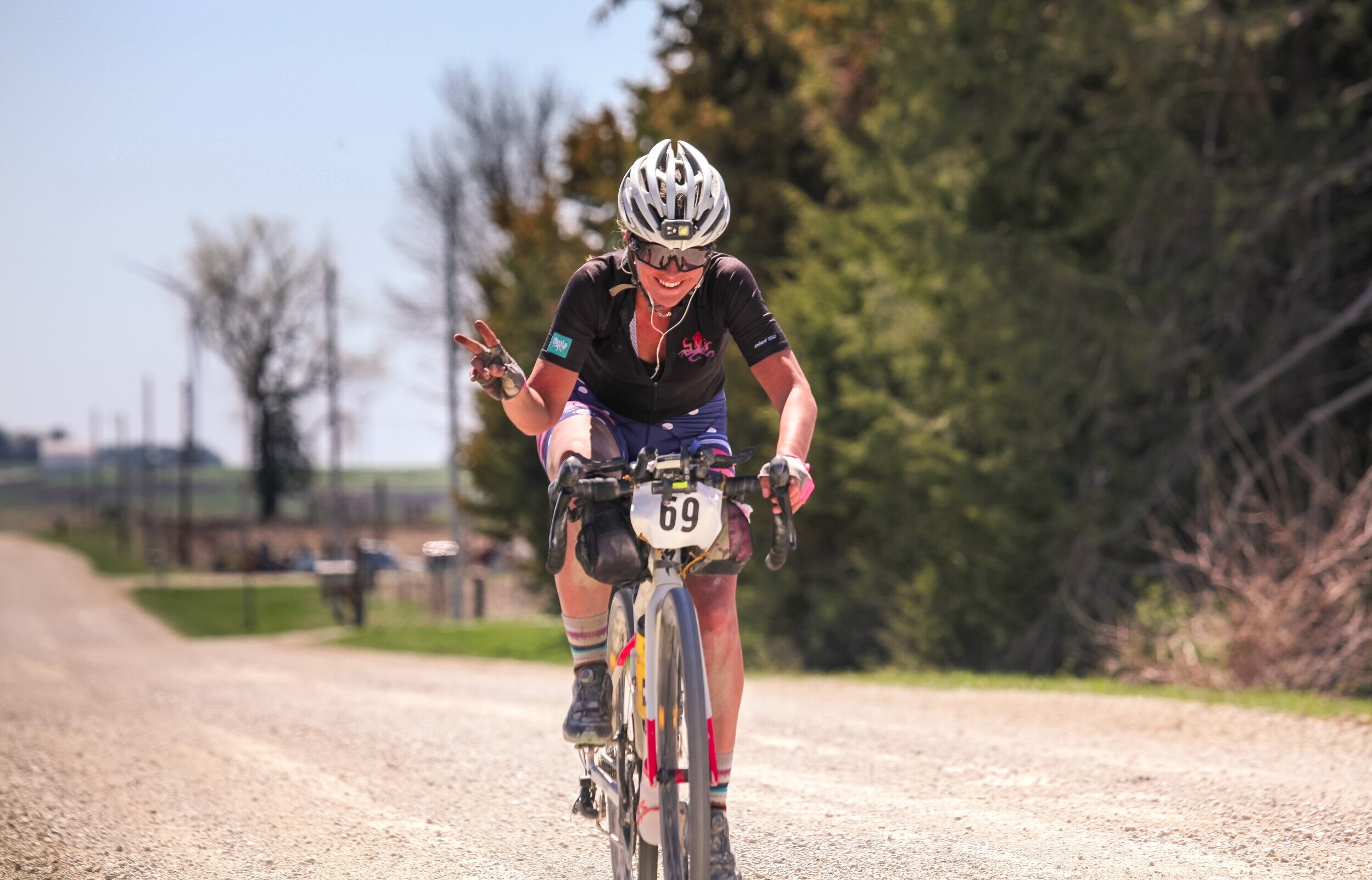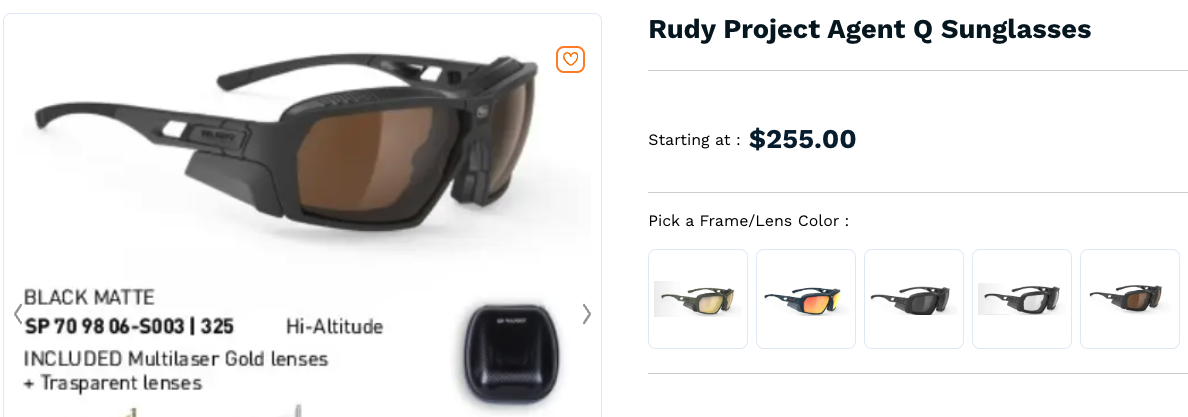Corneal Edema... a.k.a. "Ultra Eye"...
/Disclaimer: This article is not meant to be medical advice, a prescription, or a recommendation. Please consult your health care professional for specific strategies and medical advice tailored to you.
Corneal Edema in Ultra-Endurance Athletes: What You Need to Know
Corneal edema is a lesser-known yet significant issue that can affect athletes, particularly those engaged in ultra-endurance sports. This condition occurs when the cornea, the clear front surface of the eye, swells due to excess fluid buildup. Such swelling can blur vision and cause discomfort, potentially hindering performance in races or sporting events. It's not merely an inconvenience; corneal edema can substantially impair your ability to see, which is vital for any athlete. At T2M, our coaching group has observed athletes with corneal edema so severe that they've had to withdraw from races due to impaired vision. Symptoms can vary but often include blurred vision or halos around lights, and may extend to light sensitivity, visual distortion, watery eyes, eye pain or discomfort (some have no discomfort at all), or eye redness. In some instances, the cornea's cloudiness may be visible to others (see pictures below). Whether you're an ultramarathon runner, an ultra-cyclist on paved or gravel paths, or an enthusiast of long-distance challenges, understanding the potential impact of corneal edema is crucial for your eye health and your ability to complete your race or event.
The Delicate Balance of Corneal Hydration
The cornea itself needs to be maintained at a slightly lower hydration level relative to the rest of the eye to preserve clarity. Lacking blood vessels, it relies on the tear film in front and aqueous humor behind it for nourishment and waste removal. To maintain fluid balance, the cornea depends primarily on the endothelium, the back layer of the cornea. The endothelium provides both a barrier to keep excess fluid out and an active "pump" that moves bicarbonate ions out, with chloride ions, sodium ions, and water molecules following passively. This balance is critical; increased fluid within the cornea causes it to lose clarity, and vision can become temporarily severely compromised.
Challenges to Endothelial Function During Endurance Sports
During prolonged exercise, environmental factors such as wind, dust, or ultraviolet light may impair endothelial function, either allowing more fluid to enter the cornea or impairing the pumping action. Endothelial function can also be impacted by overall body hydration levels, oxygen levels, bicarbonate levels, lactate/glucose levels, electrolytes, and inflammatory signals, all of which can be influenced by exercise and nutrition. Furthermore, contact lenses may reduce oxygen availability to the cornea, and LASIK surgery may indirectly impact function by altering corneal depth/shape, contributing to additional risks for corneal edema.
The Role of the Tear Film
The tear film is vital as it provides moisture, facilitates oxygen exchange with the cornea, and offers lubrication between the eyelid and the cornea. During prolonged exercise, there is an increased risk to the tear film, as windy, dry, and high-altitude environments lead to increased tear evaporation and decreased blink rates. This can contribute to tear film instability and dry spots on the cornea. Generally, the tear film is isotonic, meaning it neither adds nor removes moisture from the cornea. If it becomes hypertonic, it will draw moisture out of the cornea due to osmotic pressure. This can be beneficial if there is excess fluid in the cornea. Conversely, fluid will move into the cornea if the tear film becomes hypotonic, potentially exacerbating corneal edema.
Prevention and Management Strategies
Prevention is the best strategy; it's preferable to avoid problems rather than try to solve them during a race. To help prevent corneal edema, it's important to address factors that may negatively impact endothelial function. Wearing glasses at all times, with UV protection during the day and clear at night, can mitigate the effects of UV light and wind. Sealed glasses with side shields may further reduce the impact of dust or dirt. For those wearing contact lenses, understanding that some lenses can impede oxygen supply is important, and alternating with glasses during events may give your eyes a break. Staying adequately hydrated with a reasonable electrolyte balance is also vital for ensuring the endothelial pump functions well.
These are examples of sealed glasses available at the time of this article, but NOT specific recommendations (better and/or less expensive alternatives may be available). Glasses that seal around the skin can help reduce wind or dust impairment to the tear film.
Intervention for Corneal Edema During a Race
If prevention strategies are unsuccessful, some athletes have used hypertonic eye drops to manage corneal edema during a race. These drops, with a higher concentration of sodium/solutes, create an osmotic pressure that helps draw excess fluid out of the cornea, gradually restoring vision as fluid balance is reestablished. Hypertonic eye drops (5%) are often used as a short-term treatment for corneal edema from various causes, with good results and limited complications. At T2M, we’ve had an athlete successfully use hypertonic eye drops in a multi-day race after having symptoms (where the corneal clouding was observable), and the athlete was able to reverse the corneal edema, and went on to win the race. You need to consult an eye care professional before using these eye drops to ensure proper use and avoid potential negative side effects. Note that for mild cases of corneal edema, the drops may improve corneal edema within a few hours, but more severe cases may take longer to have results. It’s always best to consult your healthcare professional with questions.
Remember, prevention is key to avoiding critical fluid imbalances within the eye. Before even considering the use of hypertonic eye drops in a race (or any other situation), it is critical to talk to your medical professional to understand proper use and dosage and to prevent any potential short- or long-term damage to your eyes.
Disclaimer: This article is not meant to be medical advice, a prescription, or a recommendation. Please consult your healthcare professional for specific strategies and medical advice tailored to you.
Deep Dive - Additional resources / information:
1. An investigation of Ultramarathon-Associated Visual Impairment. This document describes a clouding of the eyes for some participants doing ultramarathon races.
2. Slide presentation of the above paper. This includes some good visuals, discussion of corneal edema, and even being able to create conditions in a lab replicating the condition.
3. An article about the paper above, again with more graphics (pictures of affected eyes) and the potential use of hypertonic eye drops to help mitigate the situation.
4. Ultramarathon-Induced Bilateral Corneal Edema: A Case Report and Review of the Literature. This article also discusses the potential of lactate accumulation as a potential cause as well (but still likely multifactorial).
5. Corneal Opacity in a Participant of a 161-km Mountain Bike Race at High Altitude. Another case study, describing corneal edema in the Leadville 100 race, including pictures of the cloudiness of the athlete’s eyes.
6. Basic overview on endothelium. A longer discussion, with more details on the “Leak” and “Pump” functions, is described in this paper, “Molecular Mechanisms Underlying the Corneal Endothelial Pump”. A deep dive into how actate and bicarbonate can impact the pump in rabbit corneas is in a paper called, “Fluid transport by the cornea endothelium is dependent on buffering lactic acid efflux”.
7. Changes in the acid-base balance and lactate concentration in the blood in amateur ultramarathon runners during a 100-km run. This paper discusses how lactate concentration changes over ultra-endurance running, which may be a contributing factor to corneal swelling, as discussed in the paper in point 6 above.
8. Evidence for the Major Contribution of Evaporation to Tear Film Thinning between Blinks – This paper concludes that there is a large reduction in tear thinning rate by wearing goggles, as it reduces the evaporation rate, which is a major cause of thinning between blinks. This can be more of a factor if athletes are not blinking as often as normal during a race. Goggles were shown to slow thinning, but these were using air-tight goggles… which likely are not practical in races. That said, you “may” get benefits of lower evaporation (outside the scope of this paper) by reducing airflow across the eye, to help reduce evaporation rates somewhat (and the associated thinning of the tear film).
9. In vivo assessment of mechanisms controlling corneal hydration. This is an interesting paper looking at how quickly corneal edema subsided after it had been induced. The summary indicated that during the recovery phase (when the edema was subsiding), the majority of the recovery was coming from evaporation from the tear film, rather than from the endothelial pump. It was important to keep the eyes open to allow for evaporation, as opposed to recovering with the eyes closed (it took 2.5 hours to recover with eyes open and 4.0 with the eyes closed). A “potential” solution here (outside this paper) is the using hypertonic eye drops to help facilitate removal of the excess corneal fluid, using the osmotic pressure/gradient.
10. Review on the Use of Topical Ocular Hypertonic Saline in Corneal Edema. A meta-analysis showing that hypertonic saline seems to be a safe and effective treatment for less severe forms of corneal edema, with limited complications (mild stinging/burning sensation reported).
11. Safety and efficacy of hypertonic saline solution (5%) versus placebo in the treatment of postoperative corneal edema after uneventful phacoemulsification: a randomized double-blind study. Although related to corneal edema related to surgery, this study showed 5% hypertonic saline solution to have a significant impact on corneal edema reduction, with no adverse effects found.







